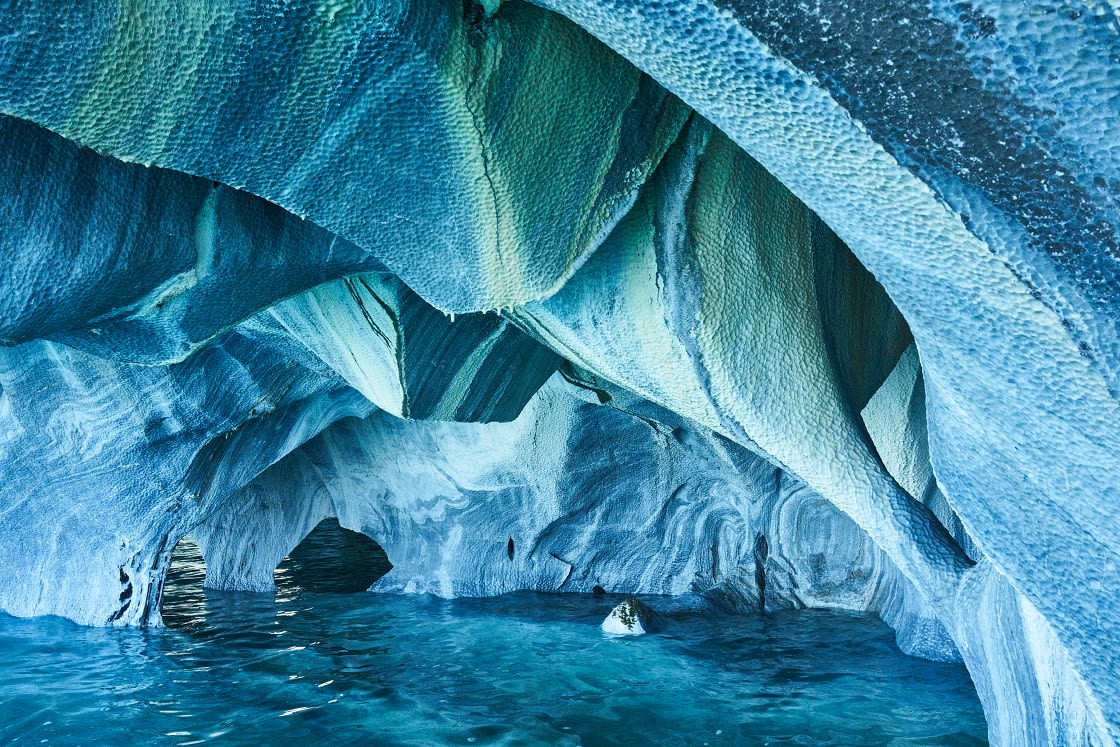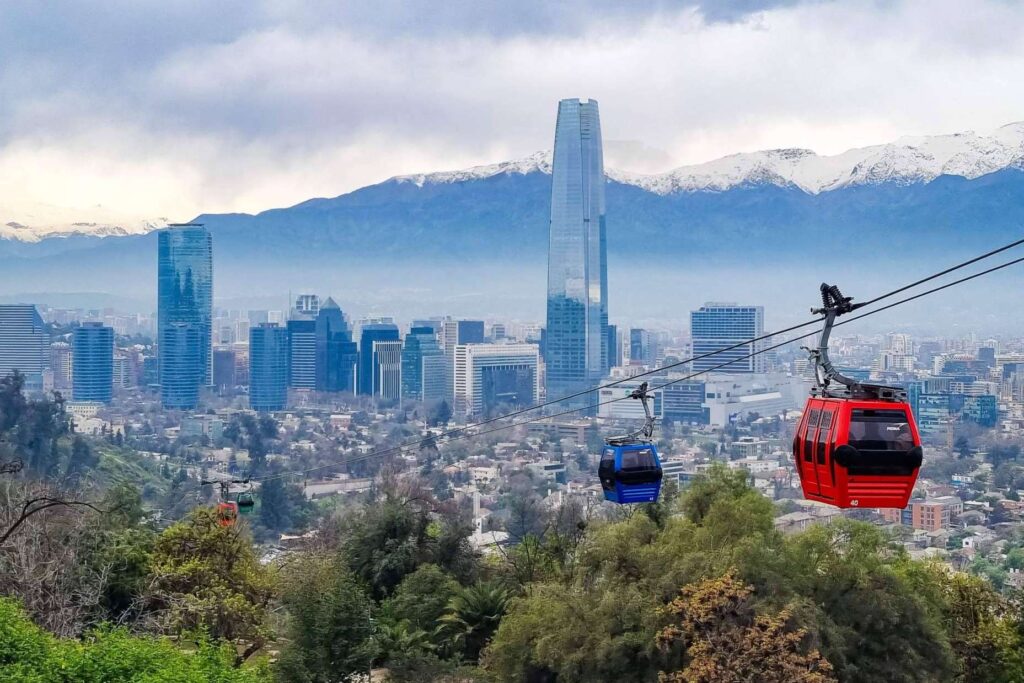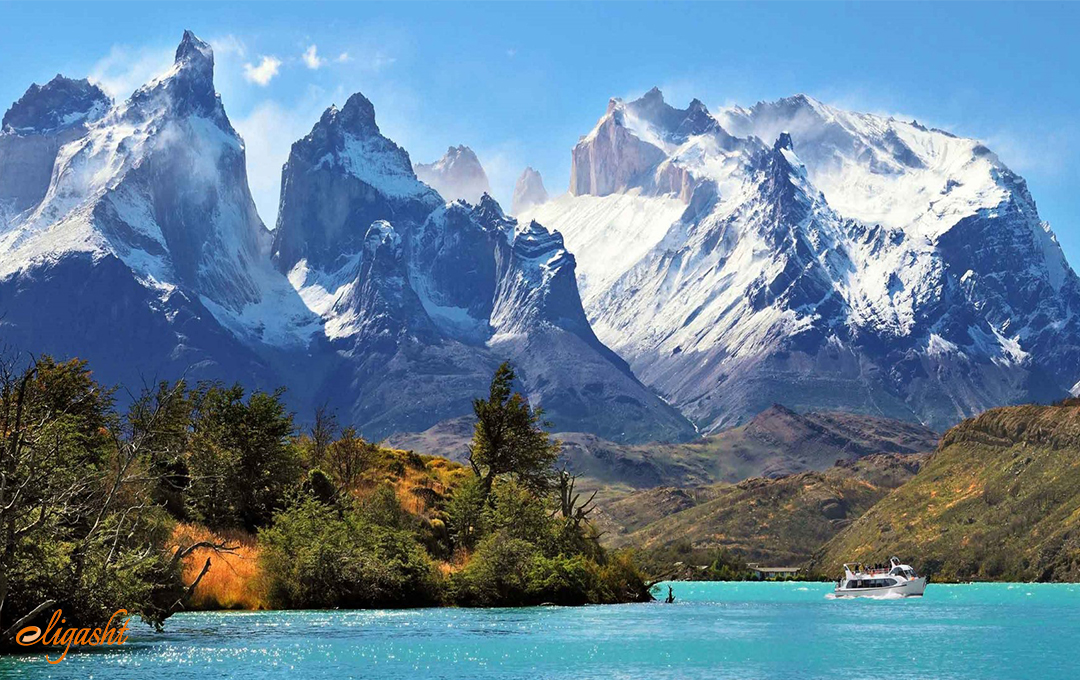
Chile, a land of dramatic contrasts, stretches like a ribbon along the southwestern coast of South America. From the arid, otherworldly landscapes of the Atacama Desert in the north to the icy fjords and glaciers of Patagonia in the south, this elongated nation offers an unparalleled diversity of natural beauty and cultural experiences. Its unique geography has shaped a rich history, fostered a resilient spirit, and gifted travelers with an unforgettable adventure. This comprehensive guide will unveil Chile’s top attractions, delve into its captivating history, equip you with essential travel tips, explore accommodation and transportation options, and advise on the best times to visit this South American gem.
Chile’s Crown Jewels: Top Attractions That Will Steal Your Breath
Chile’s allure lies in its astonishing variety. Here are some of its most iconic and captivating attractions:

Related Articles about Chile: A Tapestry of Wonders – Unveiling the Top Attractions and Essential Travel Guide:
- Unveiling the Philippines: A Guide to Paradise Found
- The Golden Gate Beckons: A Comprehensive Travel Guide to San Francisco
- Ukraine: A Journey Through History, Culture, and Unyielding Spirit
- Poland: A Tapestry of History, Culture, and Unforgettable Experiences
- Tokyo’s Crown Jewels: A Guide to Unforgettable Stays and Experiences in the Metropolis
1. Atacama Desert: The Driest Place on Earth
Prepare to be transported to an alien planet. The Atacama Desert, the driest non-polar desert in the world, boasts landscapes that defy imagination.
- Valle de la Luna (Moon Valley) and Valle de la Muerte (Death Valley): Witness surreal rock formations, salt mountains, and sand dunes that resemble lunar terrain. Sunset here paints the sky in breathtaking hues of orange, pink, and purple.
- Geysers del Tatio: At an altitude of over 4,300 meters, these steaming geysers erupt with raw geothermal power at dawn, creating a mystical spectacle against the crisp mountain air.
- Salar de Atacama: The largest salt flat in Chile, this vast expanse of white salt crystals offers stunning reflections, especially after rare rainfall, creating mirror-like vistas. It’s also a vital habitat for flamingos.
- San Pedro de Atacama: This charming desert oasis town serves as the gateway to the Atacama’s wonders, offering vibrant markets, adobe architecture, and a relaxed atmosphere.
- Stargazing: Due to its high altitude, clear skies, and minimal light pollution, the Atacama is one of the best places on Earth for stargazing. Observatories offer incredible opportunities to witness the cosmos.

2. Easter Island (Rapa Nui): The Enigma of the Pacific
A remote speck of land in the vast Pacific Ocean, Easter Island is famed for its iconic moai statues, monolithic human figures carved by the Rapa Nui people centuries ago.
- Rano Raraku: The quarry where most moai were carved, this volcanic crater is dotted with unfinished statues in various stages of completion, offering a glimpse into the monumental effort involved.
- Ahu Tongariki: The largest ceremonial platform, featuring fifteen restored moai standing stoically facing inland.
- Anakena Beach: A beautiful white-sand beach where you can relax after exploring the island’s archaeological wonders, with a few moai standing sentinel.
- Orongo Ceremonial Village: A stone village perched on the rim of a crater, this was the center of the Birdman cult, a fascinating chapter in Rapa Nui history.
3. Patagonia: A Realm of Glaciers and Peaks
Chilean Patagonia is a symphony of dramatic landscapes, from jagged mountains and turquoise lakes to colossal glaciers and windswept steppes.
- Torres del Paine National Park: The undisputed star of Chilean Patagonia, this park is a hiker’s paradise. Its iconic granite towers, the "Torres," are a UNESCO World Heritage site.
- W Trek & O Circuit: World-renowned multi-day treks that traverse the park, offering unparalleled views of glaciers, lakes, and wildlife.
- Grey Glacier: A massive glacier that calves icebergs into Lago Grey, creating a mesmerizing blue spectacle.
- Salto Grande: A powerful waterfall cascading between two glacial lakes.
- Punta Arenas & Puerto Natales: Gateway cities to Torres del Paine, offering services, accommodation, and tours.
- Glacier Alley (Aysén Region): Explore navigable fjords and witness the majestic San Rafael Glacier, a stunning sight of calving ice.
- Carretera Austral: A legendary gravel road that winds through some of the most remote and beautiful landscapes in Patagonia, offering a true adventure for road trippers.
4. Santiago: The Vibrant Capital
Chile’s bustling capital city, nestled in a valley between the Andes and the Coastal Range, offers a blend of modern energy and historical charm.
- Plaza de Armas: The historic heart of the city, surrounded by impressive colonial architecture, including the Metropolitan Cathedral and the Central Post Office.
- Cerro San Cristóbal: Ascend this iconic hill for panoramic views of the city and the Andes, accessible by funicular or cable car.
- Barrio Lastarria and Barrio Bellavista: Bohemian neighborhoods known for their vibrant arts scene, independent boutiques, excellent restaurants, and lively nightlife.
- Mercado Central: A bustling seafood market where you can sample fresh catches and experience local life.
- Museo Chileno de Arte Precolombino: Home to an exceptional collection of pre-Columbian artifacts from across Latin America.
5. Valparaíso: The Bohemian Port City
A UNESCO World Heritage city, Valparaíso is a colorful labyrinth of steep hills, winding staircases, and vibrant street art, perched precariously above the Pacific.
- Cerros (Hills): Explore the unique character of each hill, such as Cerro Alegre and Cerro Concepción, adorned with vibrant murals and charming cafes.
- Ascensores (Funiculars): These historic wooden elevators are a charming way to navigate the city’s steep inclines.
- Street Art: Valparaíso is renowned for its dynamic and ever-evolving street art scene, transforming the city into an open-air gallery.
- La Sebastiana: One of Pablo Neruda’s whimsical houses, offering insight into the poet’s life and his love for the sea.
6. The Lake District: Chilenos’ Alpine Playground
South of Santiago, the Lake District is a picturesque region characterized by snow-capped volcanoes, pristine lakes, lush forests, and charming European-influenced towns.
- Puerto Varas: A beautiful town on the shores of Lake Llanquihue, offering stunning views of the Osorno and Calbuco volcanoes.
- Osorno Volcano: An almost perfectly conical volcano, popular for hiking and skiing in winter.
- Petrohué Falls: Dramatic waterfalls cascading over black basalt rocks, surrounded by emerald forests.
- Chiloé Island: A mystical island off the coast, known for its unique wooden churches (UNESCO World Heritage sites), stilt houses, and distinct culture.
A Glimpse into Chile’s Captivating History
Chile’s history is as diverse as its landscapes. Indigenous peoples, including the Mapuche, inhabited the land for millennia before the arrival of the Spanish conquistadors in the 16th century. The colonial era saw the establishment of settlements and the exploitation of resources, often met with fierce resistance from the Mapuche.
In the early 19th century, Chile joined the wave of independence movements sweeping South America. Bernardo O’Higgins played a pivotal role in securing independence from Spain in 1818. The following decades were marked by territorial expansion, particularly through conflicts like the War of the Pacific, which saw Chile gain valuable nitrate-rich territories.
The 20th century brought periods of political and economic instability, including the socialist government of Salvador Allende and the subsequent military coup in 1973, which ushered in the authoritarian rule of Augusto Pinochet. Chile’s return to democracy in 1990 marked a significant turning point, leading to economic growth and social progress, though the legacy of the dictatorship continues to be a subject of discussion and remembrance.
Essential Travel Tips for Your Chilean Adventure
- Visa Requirements: Check the latest visa regulations for your nationality well in advance of your trip.
- Currency: The official currency is the Chilean Peso (CLP). Credit cards are widely accepted in cities and tourist areas, but it’s advisable to carry some cash for smaller establishments and remote regions.
- Language: Spanish is the official language. While English is spoken in tourist hotspots, learning a few basic Spanish phrases will greatly enhance your experience.
- Safety: Chile is generally a safe country for tourists. However, as with any travel, exercise caution, be aware of your surroundings, and avoid displaying valuables. Pickpocketing can occur in crowded areas.
- Altitude Sickness: If visiting the Atacama Desert or high-altitude areas, be aware of altitude sickness. Acclimatize gradually, stay hydrated, and avoid strenuous activity on your first day.
- Sun Protection: The sun is intense, especially in the Atacama and Patagonia. Use high SPF sunscreen, wear a hat, and sunglasses.
- Water: Stick to bottled water, especially in remote areas, to avoid stomach upsets.
- Tipping: Tipping is customary in restaurants and for services. A 10% service charge is often included in restaurant bills; if not, a 10-15% tip is appreciated.
- Connectivity: Wi-Fi is readily available in hotels, cafes, and most tourist establishments. Consider purchasing a local SIM card for better connectivity in remote areas.
- Respect Local Culture: Be mindful of local customs and traditions. When visiting indigenous communities, seek permission before taking photographs.
Accommodation Options: From Budget to Luxury
Chile offers a wide range of accommodation to suit every budget and travel style:
- Hostels: An excellent option for budget travelers and solo adventurers, offering dorm rooms and private rooms, as well as social atmospheres.
- Guesthouses and Bed & Breakfasts (B&Bs): Often family-run, these provide a more intimate and personalized experience, with comfortable rooms and local insights.
- Hotels: Available in all categories, from budget-friendly to luxurious five-star establishments, especially in cities and major tourist destinations.
- Apartments and Vacation Rentals: Ideal for families or longer stays, offering more space and self-catering facilities.
- Eco-Lodges and Glamping: Particularly popular in Patagonia and other natural areas, these offer unique stays that blend comfort with immersion in nature.
- Refugios: Basic mountain shelters found along popular trekking routes in national parks, especially in Patagonia. These are often shared dormitories.
Getting Around Chile: Navigating the Long and Narrow
Chile’s elongated shape presents unique transportation challenges and opportunities:
- Air Travel: For long distances, flying is the most efficient option. LATAM Airlines is the primary carrier, with frequent flights connecting major cities like Santiago, Calama (for Atacama), Punta Arenas, and Puerto Montt.
- Buses: Chile has an extensive and efficient long-distance bus network. Companies like Turbus and Pullman offer comfortable services between most cities and towns. This is a popular and affordable option for exploring the country.
- Rental Cars: Renting a car offers the most flexibility, especially for exploring regions like Patagonia or the Lake District at your own pace. However, be prepared for some unpaved roads, particularly along the Carretera Austral. Ensure you have a valid international driving permit.
- Trains: While not as extensive as buses, there are some scenic train routes, particularly in the central and southern regions. The "El Valparaíso" train offers a pleasant journey between Santiago and Valparaíso.
- Ferries: Essential for reaching Chiloé Island and for exploring the fjords of Patagonia.
- Taxis and Ride-Sharing: Readily available in cities. Ride-sharing apps like Uber and Cabify operate in Santiago and other major urban centers.
- Tours and Excursions: For specific attractions like national parks or the Atacama Desert, organized tours are a convenient way to see the sights and often include transportation.
Best Time to Visit Chile: Chasing the Ideal Season
Chile’s diverse climate means the "best time to visit" depends heavily on your chosen destinations and desired activities:
-
Spring (September to November):
- North (Atacama): Pleasant temperatures, ideal for desert exploration. Wildflowers may bloom after rare rains.
- Central Chile (Santiago, Valparaíso): Mild weather, perfect for city sightseeing and wine tasting. The vineyards are green and blooming.
- Patagonia: Emerging from winter, with fewer crowds and milder temperatures. Trails may still have snow at higher elevations.
-
Summer (December to February):
- North (Atacama): Can be very hot during the day, but nights are cooler.
- Central Chile: Warm and sunny, ideal for beaches and outdoor activities.
- Patagonia: The peak season for hiking and outdoor adventures. Expect longer daylight hours and the most stable weather, though wind can still be a factor. This is also the busiest and most expensive time.
-
Autumn (March to May):
- North (Atacama): Excellent temperatures for exploration.
- Central Chile: Beautiful fall colors, pleasant temperatures, and harvest season for wine.
- Patagonia: Stunning autumn foliage, fewer crowds, and cooler temperatures. Some services may begin to close down towards the end of the season.
-
Winter (June to August):
- North (Atacama): Cold at night, but days can be pleasant and sunny. Ideal for stargazing as the skies are very clear.
- Central Chile: Cooler and wetter, with snow in the Andes, making it popular for skiing.
- Patagonia: Very cold, with heavy snowfall. Many hiking trails and accommodations are closed. This is the time for dedicated winter sports enthusiasts or for those seeking extreme solitude.
In summary, for a general exploration of Chile:
- Spring (September-November) and Autumn (March-May) offer a good balance of pleasant weather across most regions, fewer crowds, and more affordable prices.
- Summer (December-February) is ideal for Patagonia and enjoying the outdoors in central and southern Chile, but expect peak season prices and crowds.
Chile is a country that truly has it all – from the stark beauty of the desert to the majestic grandeur of the glaciers, the vibrant pulse of its cities to the serene mystique of its islands. With careful planning and an adventurous spirit, your journey through this land of wonders will undoubtedly leave an indelible mark on your soul.





